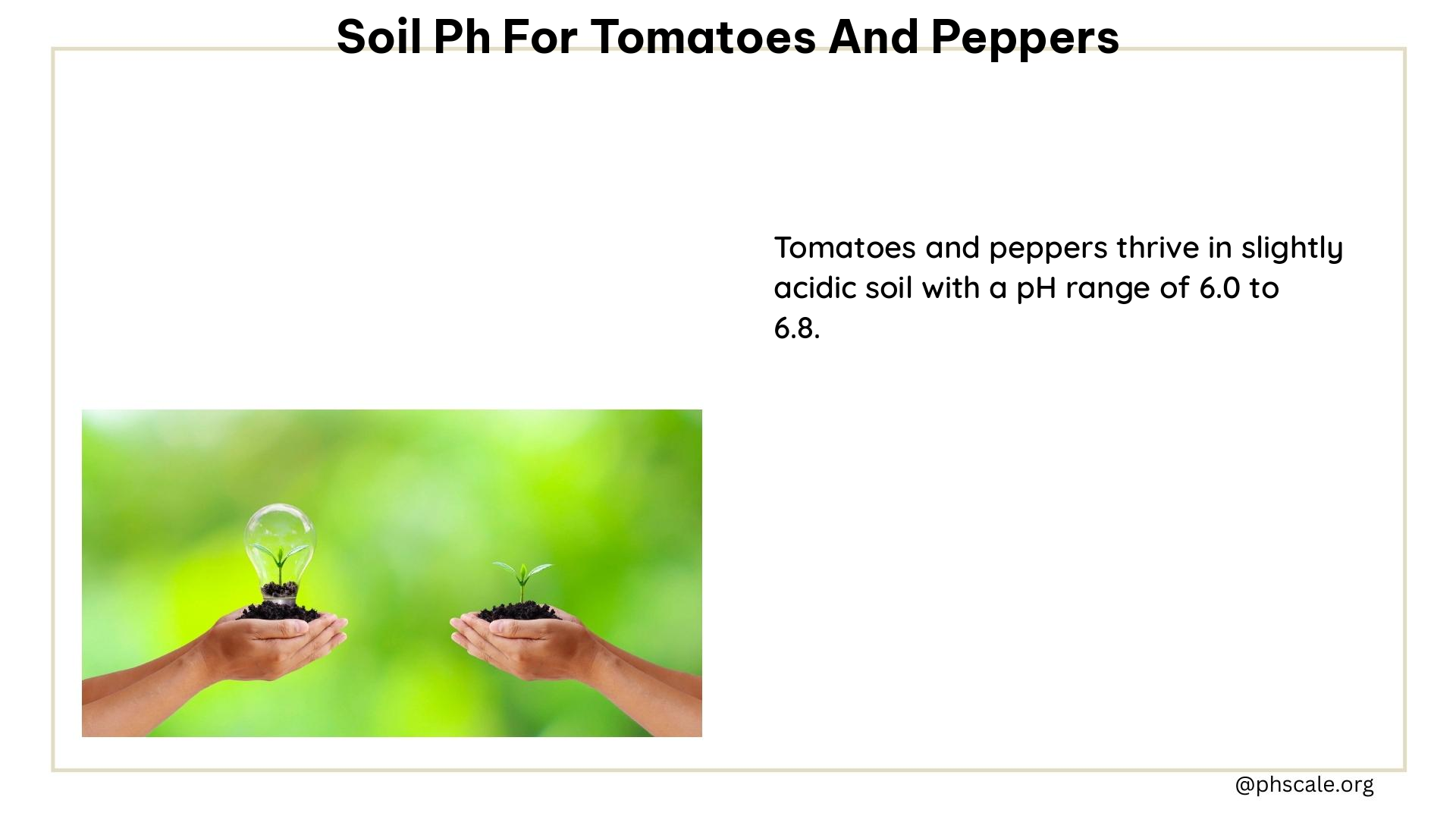The ideal soil pH range for growing lush, productive tomatoes and peppers is slightly acidic to neutral, typically between 6.0 and 7.0. This pH range ensures that these plants can efficiently absorb essential nutrients, leading to vibrant foliage, abundant fruit, and overall plant health. In this comprehensive guide, we’ll explore the importance of soil pH, the consequences of imbalance, and practical methods to achieve the perfect growing conditions for your tomatoes and peppers.
Understanding Soil pH
Soil pH is a measure of the acidity or alkalinity of the soil, ranging from 0 to 14, with 7 being neutral. Tomatoes and peppers thrive in a slightly acidic to neutral environment, with tomatoes preferring a pH between 6.0 and 7.0, and peppers doing best in a slightly more acidic range of 5.5 to 6.5.
Ideal pH Range
| Crop | Ideal pH Range |
|---|---|
| Tomatoes | 6.0 to 7.0 |
| Peppers | 5.5 to 6.5 |
Lowering Soil pH

If your soil is too alkaline, you can take steps to lower the pH and create the optimal growing conditions for your tomatoes and peppers. Here are some effective methods:
-
Elemental Sulfur: This is one of the most reliable and long-lasting ways to lower soil pH. Elemental sulfur breaks down slowly, consistently reducing the pH over time.
-
Aluminum Sulfate: This chemical can also help lower the pH, but it may have a more immediate effect and may need to be reapplied more frequently.
-
Vinegar: Adding a diluted solution of vinegar to the soil can help lower the pH, but this method may not be as effective as using sulfur or aluminum sulfate.
-
Organic Matter: Incorporating organic matter, such as peat moss, compost, or decaying vegetation, can help reduce alkalinity and lower the pH over time.
Consequences of Incorrect pH
If the soil pH is not within the optimal range for tomatoes and peppers, it can lead to several problems:
-
Nutrient Deficiencies: Plants may struggle to absorb essential nutrients, leading to stunted growth, discolored leaves, and reduced yields.
-
Reduced Yields: Experiments have shown that tomato plants grown at a pH of 4.8 were significantly undersized compared to those grown at a pH of 6.0.
Contaminants and Chemicals
Certain contaminants and chemicals can also affect the soil pH, either raising or lowering it. It’s important to be aware of these factors:
- Lime: This material can raise the pH, making the soil more alkaline.
- Sulfuric Acid: This highly corrosive substance can lower the pH, but it should be handled with extreme caution.
- Aluminum: While it can lower the pH, high levels of aluminum can be toxic to plants.
Balancing Soil pH
To maintain the ideal pH range for your tomatoes and peppers, follow these steps:
- Test the pH: Use a reliable pH meter or send a soil sample to a laboratory for testing.
- Choose the Right Amendments: Select the appropriate amendments, such as sulfur or organic matter, based on the pH test results and the specific needs of your plants.
- Monitor and Adjust: Regularly monitor the soil pH and make adjustments as needed to keep it within the optimal range.
Historical Practices and DIY Remedies
Farmers and gardeners have long used natural methods to balance soil pH. Some historical practices and DIY remedies include:
- Historical Practices: Adding organic matter, such as compost or decaying vegetation, to the soil to help lower the pH.
- DIY Remedies: Using household items like vinegar or coffee grounds to try to lower the soil pH, although the effectiveness of these methods may vary.
By understanding the importance of soil pH and implementing the right strategies, you can create the perfect growing conditions for your tomatoes and peppers, leading to a bountiful harvest and thriving plants.
References
- Fine Gardening: “A Soil pH Primer: Getting It Right Gets Results” by Israel Zelitch (April 1999)
- Dave’s Garden: “Tomatoes & Peppers: Lower pH” (2005)
- Westland Seed, Inc.: “Soil pH for Growing Vegetables”
- Tomatoville: “Peppers. Acidifying the soil.” (2013)
- Reddit: “How to reduce soil pH of tomato plants?” (2023)
